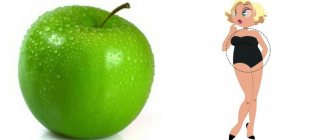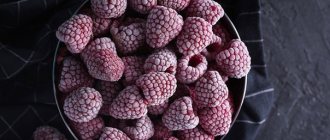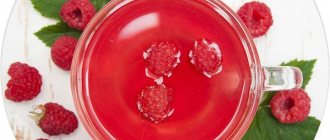- 6788
- lingonberry viburnum cranberry lemongrass sea buckthorn rose hips Berries
Autumn berries are natural antidepressants. And they will be a great help to those who for some reason decided that it is too late to expect pleasant surprises.
Autumn berries are stored for a long time and are easily turned into preserves, jams, fruit drinks and cocktails. That is, that supply of energy that will help you overcome a bad mood in the autumn season and even... lose weight.
April
The Crimean spring is an unpredictable thing. It happens that in the second half of the month you can already sunbathe, but it happens the other way around - suddenly there are frosts and the flowering trees are covered with snow. But we will still consider the average weather and will not go to extremes.
Strawberry
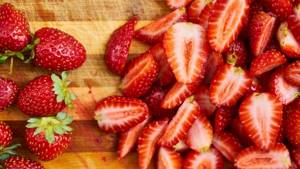
Photo: pixabay.com In Crimea, this delicious berry is usually planted in early March under film in order to get the first harvest by April. The very first berries are rarely sweet, since they have not yet had time to be saturated with the hot sun, but nevertheless they are already fragrant and very beautiful.
By the end of April, all markets in Crimea are usually bursting with strawberries. And here you shouldn’t chase the appearance of the berries. As a rule, the largest and most blemish-free ones turn out to be not the most delicious. But the unsightly, sometimes even shapeless ones are the sweetest and most fragrant.
Price: from 200 rub. for 1 kg.
May
In the last month of spring, the Crimean markets are simply overwhelmed with fruit and berry abundance. Strawberries, already full of juice and sweetness, flood the markets, but new harvests are also ripening.
Cherries
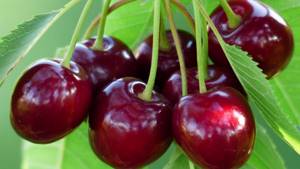
Photo: pixabay.com Queen of Crimean berries. The first cherry does not yet have strength and sweetness; it is pink and rather small. But for those who can’t wait to get a taste of summer, I can buy some. But by the end of the month, many varieties are already offered to buyers. Here it is worth noting the best of them: “Valery Chkalov”, “Bull’s Eye” and “Ox Heart”. The first is sweet and black, the second is very large, black, and the third combines all these characteristics and really resembles a heart in shape.
As with strawberries, there is no need to chase beauty here. Often the sweetest is the small black berry, the price of which is much lower than for “exhibition” varietal cherries. You should take at least a kilogram of it, because this berry is akin to seeds: once you start eating it, it’s difficult to stop.
Price: from 120 rub. for 1 kg.
June
Summer in Crimea lasts so long that it is difficult to say in which month which berry appears. Different varieties ripen at different times, so the same cherries can be found on sale in April and even at the end of July. And strawberries produce 2-3 harvests per year. Therefore, in June, cherries still dominate among the Crimean berries on the markets, but there are already others.
Mulberry or mulberry
In Crimea, this tree grows everywhere: it is planted in personal plots, on the streets and in parks. Mulberries, a close relative of figs, grow very quickly and are incredibly unpretentious. At the beginning of summer, delicious white and black berries appear on its branches, vaguely reminiscent of blackberries. The tree got its name because its leaves are adored by the silkworm, which is why mulberry branches are used in grenage factories as food for caterpillars.
Of course, you can buy mulberries at the market (there they are sold in cups), but there is also a high probability of encountering a tree strewn with berries right on the street.
Price: 100 rub. for 1 glass.
Strawberries
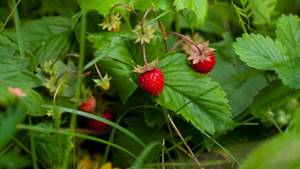
Photo: globallookpress.com One of the few berries that grows in the Crimean forests is strawberries. She loves the edges of the beech and hornbeam forests of the mountainous part of the peninsula, which she often covers with a continuous carpet. And the higher you go in the mountains, the larger, sweeter and more aromatic the strawberries are. If you climb, say, to the Chatyr-Dag plateau, you can find berries the size of hazelnuts.
Those who are too lazy to go to the forest can buy strawberries at the market.
Price: 100-150 rub. for 1 glass.
July
The height of summer is the height of nature's gifts: fruits, vegetables and, of course, berries. In markets, shops, spontaneous settlements and along highways you can buy everything your heart desires.
Cherry
After the cherries comes the turn of the cherries. Here they, like mulberries, grow everywhere. Trees strewn with dark red berries can be found just on the streets, and then all the ground under them turns out to be scarlet blots, and in the courtyards of private houses.
Sour cherries are most often used to make aromatic jams, compotes, jelly and as a filling for baked goods.
Price: from 180 rub. for 1 kg.
Gooseberry
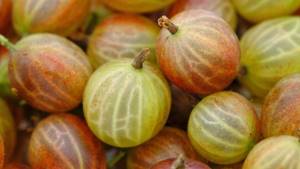
Photo: pixabay.com The berry, typical of central Russia, is rarely grown in its pure form in Crimea. Much more often you can find a hybrid of gooseberries and black currants, inheriting the shape from the first and the color from the second. This hybrid gooseberry is much larger than the classic one, red and sweeter.
Price: from 180 rub. for 1 kg.
Currant
First of all, we are talking about black currants. Red and white are much less common here. But the black one is sold in abundance, and they plant it willingly, because it is a very unpretentious plant.
Grinded with sugar, this berry has no equal in taste and abundance of vitamins. In this form, it is perfectly preserved throughout the winter.
Price: about 100 rub.
for 1 glass.
ROWAN (RED)
There is a popular belief: if there are a lot of berries on a tree, then the winter will be snowy and harsh. Rowan fruits have a sour, bitter, slightly tart taste. As in the case of viburnum, after the first frost they lose their astringency and become tasty and sweetish.
Rowan berries have a record amount of vitamins. For example, they contain more vitamin C than lemon. Rowan is also rich in vitamins P, B2, PP, E, K, contains provitamin A, sugars, amino acids, tannins, pectin and bitter substances, organic acids (malic, citric, succinic), a lot of rutin, iron, magnesium, iodine, potassium, magnesium, zinc.
Rowan has a diuretic, diaphoretic, hemostatic, choleretic effect. An infusion of rowan and rose hips is an excellent fortified remedy for boosting immunity and the body's resistance to viral and colds.
August
This month, watermelons and melons reign supreme. They rise like pyramids in all markets, shops and along the sides of highways.
Watermelon
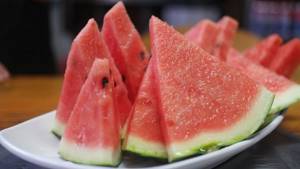
Photo: pixabay.com The berry, weighing 12 kilograms or more, is the real highlight of the August program. There are not just a lot of watermelons in Crimea at this time, there is a real abundance of them. You can buy watermelon in every self-respecting super- and even mini-market.
Choosing a ripe and sweet watermelon is an art, akin to magic. There is a lot of advice that says that you need to take the loudest fruit with a dry tail and a large yellow spot. But sometimes even those who follow all the rules are not always able to choose the right one. Among the most delicious, elongated watermelons, like a rugby ball, should be noted.
Price: 15-30 rub. for 1 kg.
Blackberry
The black sister of the raspberry has chosen the garden plots and forest glades of the Crimea. In the forest, the berry is smaller, but very fragrant, but the garden blackberry is juicy and incredibly large. Unlike raspberries, they are vines with thorns and are even planted as hedges.
Price: from 250 rub. for 0.5 kg.
Juniper
Juniper is a plant from the cypress family. There are about 20 of its species on the territory of the Russian Federation.
It is worth remembering that juniper berries ripen only in the third year. When ripe they have a prune color with a bluish tinge. Helps improve appetite and has a beneficial effect on the digestive process.
The most important property of juniper is antiseptic. This plant contains many times more phytoncides that kill microbes than even coniferous trees.
Juniper oil and tincture are a wonderful diuretic! By increasing blood circulation in the kidneys, it activates the work of these important organs.
In folk medicine, juniper was used to treat diseases such as gout, scabies, rheumatism, and scrofula. The decoction was used instead of raspberries for colds.
September
In Crimea at this time, summer is still in full swing, local markets are bursting with an abundance of fruits, vegetables and berries.
Grape
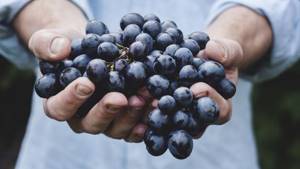
Photo: pixabay.com If you are going on a wine tour, come to Crimea in September. The local climate is perfectly suited to noble vines; it is dry and moderately hot. In September, most wine and table grape varieties ripen - whole fields of sunny golden, scarlet and black bunches. Why, there are fields, there is no such yard in Crimea where grapes do not grow: they entwine gazebos, creep onto the balconies of apartment buildings, bend their branches over the streets and boulevards.
In September, you can find grapes in any store and market: sweet and sour, large and small, black and white. “Lady's finger”, “Muscat”, “Moldova”, “Sauvignon”, “Cabernet” and many more noble varieties of this berry.
Price: 30-40 rub. for 1 kg.
Strawberry
Summer in Crimea lasts almost five months, and during this time two, if not three strawberry crops have time to ripen. If May strawberries turn out to be not very sweet, then September strawberries have already managed to absorb all the Crimean sun, they are rich red and simply sugary.
Price: 180-200 rub. for 1 kg.
Raspberries
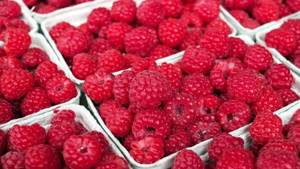
Photo: pixabay.com Garden raspberries bear fruit throughout the summer and autumn. It has practically no specific seasons, so you can buy this berry in Crimean markets from June to October. It is most often sold in plastic trays.
Price: about 200 rub. for 0.5 kg.
Kiwi
In other words, actinidia. There are no special plantations for growing kiwi in Crimea, but this plant is readily planted by rural residents in the southern regions of the peninsula, in particular in the vicinity of Alushta. Kiwi branches beautifully weave around the verandas of houses, and the fruits are a tasty bonus.
Crimean kiwis are available for sale only in the markets of the South Bank; you are unlikely to see them in stores.
Jujube
Few people outside of Crimea have heard of this interesting berry. Jujube, or unabi, is not only tasty, but also incredibly healthy fruit. It is also called the “Crimean date”, it is also oblong and brown. But the taste is more like a mixture of apple and pear. “Crimean date” is a natural medicine for people suffering from hypertension.
Price: about 200 rub. for 1 kg.
Feijoa
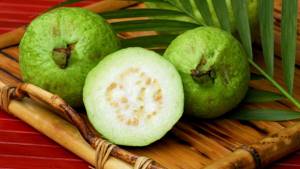
Photo: globallookpress.com Like kiwi, feijoa is not grown on an industrial scale, but these green berries with thick skin can often be found in Crimean markets. They are often picked green so that guests of the peninsula can take them home fresh and not spoiled, but if you want to taste ripe feijoas, choose soft berries.
The fruit tastes like a mixture of pineapple and strawberries. It is the richest source of iodine.
You can buy feijoa both at the market and, very rarely, in supermarkets; more often you can find jam made from this berry.
Price: from 300 rub. for 1 kg.
When wild berries ripen
The contrasts of June nature are smoothed out. The flora and fauna of the North are revived, the snow in the tundra melts under the never-setting sun of the polar day, and the massive growing season of dwarf berry plants begins.
In the northern taiga, June begins with the blossoming of marigolds and ends with the blossoming of lingonberries. In the southern subzone of the northern taiga, bird cherry flowers bloom at the beginning of June, and strawberries ripen at the end of June .
And in the middle zone, June begins with lingonberry and buckthorn flowers and ends with the ripening of blueberries. The first broods of hunting game (June is the month of chicks). Hunting is prohibited everywhere; June is game nesting month.
...Chamomile meadows and forest glades blaze with white flames. The chamomile peace of the forest clearing is in sight, and the first sound of the forest flute is in ear: “fiuliu”. It was the oriole who spoke. You hear this song and, lo and behold, there is also news under your feet: the yellow berries of the first strawberries. Its wonderful aroma is carried by the breeze.
The Russian summer berry season begins with strawberries and ends with cranberries.
Note that, on average, in the forest belt of our country, blueberries ripen a decade or half a month after strawberries, wild raspberries ripen two decades or a month later, lingonberries ripen 35-45 days after raspberries, and stone fruits ripen a week after raspberries.
Judge by the weather: in dry hot weather, after strawberries, other berries ripen faster than in rainy weather. As a rule, the ripening of boron berries from Russian forests in the east of the country occurs later than in the west.
We present the average ripening time for wild berries, which is important when harvesting them, for organizing records of game habitats in berry fields, the timing of the opening of summer-autumn hunting, hiking trips and phenological observations.
June berries ripen:
- Strawberries. In Bashkiria 16 ripen, in the Yaroslavl region 18, in the Novgorod region 22, in the Moscow and Kuibyshev regions 23, in the Urals (Sverdlovsk) 24.
- Honeysuckle (black) . In the Far East 25.
- Blueberry. In the western regions there are 28.
July berries ripen:
- Strawberry
. In the Gorky region 1, in Omsk 5, in Yeniseisk 10, in Eastern Siberia 12, in Yakutia 17. - Blueberry. In the Yaroslavl region 2, in the Moscow region 3, in Belarus and Novgorod 4, in the Sverdlovsk region 7, in the Vologda region 16, in the Omsk region 18, in Yeniseisk 22.
- Blueberry. In the Yaroslavl region 13, in the Vologda region 20, in the Moscow region at the end of July.
- Raspberries. In Bashkiria 6, in the Moscow region 8, in the Kuibyshev region 12, in Belarus, Yaroslavl and Sverdlovsk regions 14-15, in the Leningrad region 18-19, in the Gorky region 20, in the Vologda region 23, in Tobolsk 26, in Eastern Siberia 25 .
- Bird cherry. In the Novgorod region 13, in the Yaroslavl region 17, in the Kuibyshev region 9.
- Rowan. In Belarus 19.
- Cloudberry. In the Novgorod region 2, in the Vologda region 7, in Tobolsk 16, in Krasnoyarsk 27.
- Prince. In the Kuibyshev region 12, in Tobolsk 15, Nerekhta 17, Krasnoyarsk 28.
- Stone berry. In the Moscow region there are 15, in the Vologda region 28.
- Currant (black). In the Novgorod region 10, Vologda region 26, Omsk region 29.
August berries ripen:
- Buckthorn. In Belarus 3, in the Moscow region 6, in Nerekhta 11.
- Rose hip. In the Novgorod region 21, in the Moscow and Vologda regions 22-23.
- Currant (black). Sverdlovsk region 2, Kabansk 5, Kezhma 8.
- Blueberry. In Yakutia and Buryatia 4-5.
- Blueberry. In Eastern Siberia 1.
- Bird cherry. In the Vologda and Sverdlovsk regions in Tobolsk 1-5, in Yeniseisk 6, in the Kuibyshev region 9, in the Moscow region 10, in the Yaroslavl region, Yakutia, Eastern Siberia 17-18.
- Cowberry. In the Moscow and Yaroslavl regions 1-2, in Yakutia b, in the Novgorod and Sverdlovsk regions 5-6, in the Vologda region 12, in Eastern Siberia 29.
- Rowan. In the Novgorod region 1, in the Moscow region 7, in the Yaroslavl region 16, in the Gorky region 27.
- Kalina. In the Moscow region 4, in the Novgorod region 16, in Nerekhta 21.
- Blackberry. In the Novgorod region 1.
In September, cranberries ripen, in September and October - sea buckthorn, hawthorn, privet, barberry, actinidia, zoster, blackthorn. In November, after frost, you can collect rowan, viburnum, sea buckthorn, blackthorn, hawthorn, privet, barberry, rose hip, juniper, and cranberry.
In the warm, long autumn, secondary flowering of berries is often observed, and in the middle zone, forest raspberries and second-harvest strawberries even sometimes appear on collective farm markets. This was the case in 1947, when the average monthly air temperature in September was 6° above normal.
The largest and most neglected August harvest of berries on permafrost ripens in the tundra - from Chukotka to Murman. These are golden cloudberry, “pineapple of the north”, - mamura - raspberry - Arctic raspberry, blueberry, lingonberry, blueberry, black crowberry, etc.
In autumn, the nature of the Moscow region changes its face. The forests are dressed in a new outfit. And there are many of them near Moscow: taiga corners of coniferous forests, these ancient moraine-forest landscapes with boulders, birch groves, majestic oak groves.”
There are a lot of changes happening and they are everywhere. Autumn is the golden time.
October
There will be a shift between early and late autumn berries, but even here the shops and markets will not be empty. In October, the remains of watermelons and melons are sold, markets continue to burst with grapes of all varieties, and raspberries are still bearing fruit on private farms. But new types of berries also appear in October.
Sea buckthorn
The healthy berry is known throughout the country. Sea buckthorn is quite difficult to collect, but it is readily planted in gardens so that it can then be ground with sugar, made into jam, frozen, or obtained as medicinal oil.
Price: 150 rub. for 1 glass.
Garden dogwood
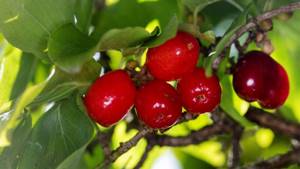
Photo: pixabay.com One of the business cards of Crimea. Dogwood bushes begin to bloom earlier than anyone else, back in February, and by autumn, scarlet juicy berries ripen on them (translated from Turkic “kyzyl” means “red”). Garden dogwood is pear-shaped and comparable in size to an acorn; inside each berry there is an oblong seed. The berries taste sweet and sour, but they are rarely eaten raw. Much more often, dogwood is made into jam or ground with sugar. Dogwood jam is one of the most delicious and aromatic.
Price: about 100 rub. for 1 kg.
Rose hip
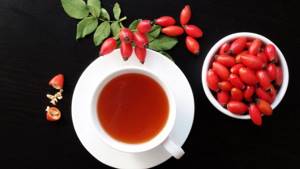
Photo: pixabay.com It is difficult to imagine a berry that could surpass rose hips in terms of health benefits, and it contains much more vitamin C than citrus fruits.
The berry is readily planted in personal plots, because rosehip is a wild rose, which in May-June pleases the eye with large white or pink fragrant flowers, and in October with healthy berries.
Compotes and jam are prepared from rose hips, the berries are dried and healthy tea is prepared.
Price: from 100 rub. for 1 glass.
CRANBERRY
One of the most common winter berries, it contains a complete collection of useful substances: organic acids, pectins and vitamins (C, B1, B2, B5, B6, PP, K1). It is also rich in macro- (potassium, phosphorus, calcium) and microelements (manganese, copper, iron, boron, cobalt, iodine, zinc and others). When fresh, the berry is low in calories (only 26 kcal per 100 g), but if you use it in dried form, the calorie content will increase significantly - up to 308 kcal per 100 g. Cranberries can also be consumed frozen and soaked; it is good to make juices and fruit drinks from them , jams, jelly, cocktails and cranberry kvass, or add to salads, pies and other dishes.
Cranberry enhances the production of gastric and pancreatic juices, which means it improves appetite and digestion. That is why it is used to increase acidity in gastritis with low acidity, as well as to treat inflammation of the pancreas. The diuretic and bactericidal effects of this berry are useful for inflammation of the genitourinary area.
According to some versions, querticin found in cranberries can prevent breast and colon cancer. Whether this is true or not remains to be determined by scientists, but some of the properties of this flavonoid have long been known: decongestant, antispasmodic and anti-inflammatory. Therefore, cranberry juice can be used to reduce spastic headaches, and in diluted form - as a gargle for gum disease.
Cranberries are harvested in late autumn, trying to get there before frost, because they will destroy ascorbic acid in the berry. When collecting, do not forget about the leaves: they can be added to restorative and stomach teas, and also used externally as an infusion in the form of baths for rheumatism.
This berry is perfectly preserved until spring when frozen thanks to the natural preservative – benzoic acid. Thaw in portions as much as you use at a time, and be sure to wait until spring - cranberries will serve as an excellent remedy against spring vitamin deficiency.
Cranberry juices, fruit drinks and compotes not only quench thirst well, but also have antipyretic properties and are an excellent replacement for tablets for colds, flu and even sore throats. The anthocyanins contained in cranberries help restore the balance of cholesterol, increasing the level of “good” and reducing the amount of “bad”, and also increase the elasticity and strength of the walls of blood vessels, thus reducing the risk of atherosclerosis.
Cranberry juice
Ingredients
- 150 g cranberries
- 100 g sugar (can be replaced with honey)
- 500 g water
How to cook:
- Grind cranberries. Squeeze out the juice.
- Place the berry pulp in a saucepan and, adding water and sugar, bring to a boil. If using honey, add it in the next step.
- Cool the broth. Add the previously squeezed juice and mix.
November
At a time when the first snow is already falling in other regions of Russia, in Crimea the leaves are just beginning to fall and late fruits are ripening.
Wild dogwood
It ripens later than the garden variety, because it grows in mountain forests that are at a decent altitude. Wild dogwood is not as large, but it is incomparably tastier and more aromatic than the domestic variety. The best dogwood is the one that survived the first frost. Then the berries turn from red to almost black, like overripe cherries, and honey-sweet.
You should not look for wild dogwood in the markets; it is better to go to the forest.
Turn
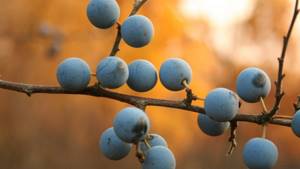
Photo: Vladimir LOBACHEV, commons.wikimedia.org Wild plum. Ripens in Crimean forests in early November. By this time, the tall thorny bushes are sprinkled with large gray berries, sweet and sour and slightly tart in taste. Crimean sloe is so aromatic that it gives excellent taste to jam and compotes.
Like forest dogwood, you won’t find blackthorns at the market, so stock up on a basket and go to the mountain forest for it.
Cowberry
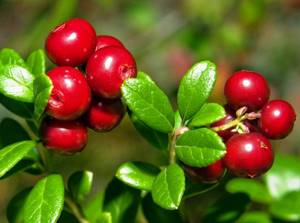
Lingonberry is another autumn berry that probably each of us knows. At the same time, not everyone is aware that lingonberries are one of the richest berries in vitamins; they contain a whole range of biologically active substances, organic acids, and sugars. Lingonberry is the first remedy for high blood pressure, and also has another useful function - it quenches thirst much better than any drink. By the way, not only the berries of evergreen shrubs can bring benefits. For example, lingonberry leaves contain tannin compounds, thanks to which preparations based on lingonberry leaves have an anti-inflammatory and bactericidal effect on the body. Substances such as catechins contained in lingonberries strengthen capillaries and reduce their fragility. The leaves of the plant have astringent and antiseptic properties. The leaves are used in the treatment of gout, gastritis, liver and much, much more.
The miracle berry should be collected from the beginning of September to November. The fact is that if at the beginning of autumn the fruits are bitter and sour, then closer to winter, without losing their beneficial properties, lingonberries radically change their taste for the better. So, when going to the forest in the fall, do not forget to take any container with you - returning home without lingonberries during this period would be a real crime.




